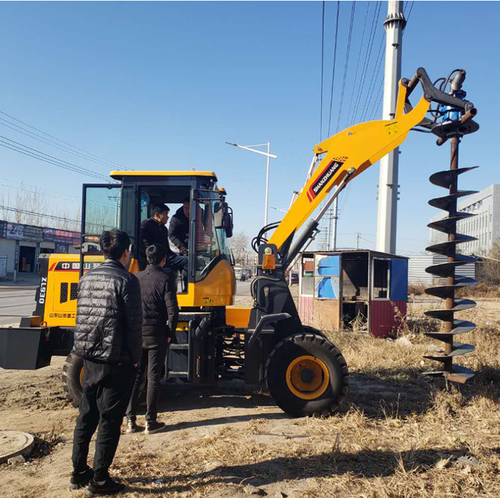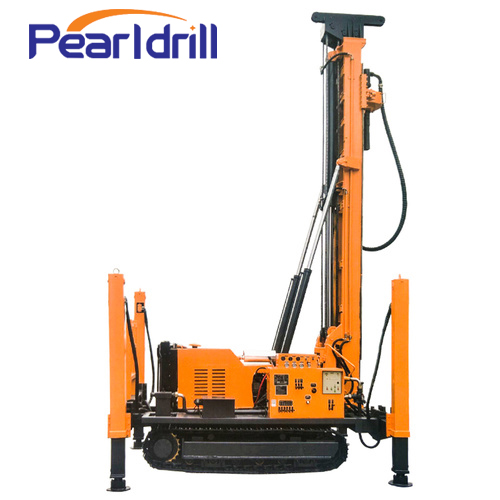Solutions for Rapid Drill Tool Wear in Water Well Drilling Rigs in 2025
Water well Drilling Rigs are absolutely crucial for current and future geological exploration and water resource development. However, rapid wear and tear on drilling tools has always been the major roadblock, slashing efficiency and ballooning operating costs. As we face increasingly complex geological formations and higher demands in 2025 and beyond, figuring out how to effectively solve this problem is the key issue the drilling industry needs to address.

The Core Reasons Why Tools Wear Out So Fast
1. More Complex Geology:
High-Hardness Layers: When we hit formations like quartzite or granite—which are super hard and abrasive—the wear on the drill bit cutters and the outer walls of the drill pipes gets really intense.
Fractured and Cracked Zones: Broken rock pieces and sharp, hard edges cause massive impact and scraping on the tools while drilling.
2. Poor Drilling Fluid (Mud) Performance:
Weak Carrying Capacity: If the drilling mud can't pull the rock cuttings out of the hole fast enough, the cuttings just grind the tools repeatedly at the bottom and sides of the wellbore.
Not Enough Lube and Cooling: If the mud lacks good lubrication and cooling, the drill bit works under high heat and pressure, which speeds up thermal wear and fatigue.
3. Bad Operating Practices and Parameter Choices:
Mismatched Weight-on-Bit (WOB) and RPM: Applying too much WOB or using an overly high RPM overloads the bit cutters, leading to severe impact and friction, which quickly accelerates wear.
Pulling out (Tripping) Too Fast: Especially when moving through complex formations, this can cause abnormal, harsh friction between the drill pipe and the wellbore wall.
4. Drilling Tool Material and Manufacturing Flaws:
Material Isn't Tough Enough: The wear-resistant materials (like carbide inserts) on the bit cutters or drill pipe joints are low quality or the protective coating peels off.
Low Manufacturing Precision: Tool geometry errors can cause extra vibration and uneven wear during drilling.

The Comprehensive Solution for 2025 and Beyond
1. Optimize Drilling Fluid Performance:
Polymer Applications: We need to push the use of high-performance mud systems that provide better inhibition and lubrication. Adding high-efficiency lubricants (like graphite, oil-based lubes, or special polymers) can significantly reduce the friction coefficient between the drill pipe/wellbore and the bit/bottom hole.
Optimized Mud Weight and Viscosity: We must dynamically adjust the mud's flow properties based on the geology to ensure cuttings are efficiently carried to the surface, cutting down on bottom-hole grinding.
2. Upgrade Tool Materials and Structure:
Next-Gen Carbide: Switch to higher-strength, tougher PDC (Polycrystalline Diamond Compact) or new thermally stable polycrystalline diamond (TSP) materials.
Wear-Resistant Coating Tech: Use hard-facing technology (like tungsten carbide or titanium alloy) on high-wear areas—drill pipe joints, stabilizers, and the bit's gauge—to create a super-hard protective layer that massively extends life.
Optimized Tool Design: Design bit crowns with better flow paths and cutting evacuation capabilities to prevent cuttings from hanging around.
3. Smart Parameter Optimization and Control:
Measurement While Drilling (MWD) & Real-Time Monitoring: Use downhole sensors to continuously track key parameters like torque, axial vibration, and lateral vibration.
Smart WOB/RPM Control: Utilize advanced rig control systems to allow adaptive adjustment of WOB and RPM. Based on geological feedback, the system should automatically find the "sweet spot"—the parameter combination that minimizes wear and maximizes efficiency.
Reducing Non-Rotary Contact: Employ downhole tools like shock absorbers and stabilizers to effectively suppress drill string vibration, keeping the bit cutting steadily and minimizing the drill pipe's harsh friction against the wellbore wall.
4. Standardized Operation and Maintenance:
Scientific Drilling Procedures: Establish standardized parameter ranges (WOB, RPM, flow rate) for different formation types and strictly follow operating procedures.
Regular Inspection and Timely Repair: Implement strict protocols for pre-run and post-run Non-Destructive Testing (like magnetic particle inspection). Promptly repair or scrap worn-out pipes and joints to prevent "sick" tools from being run.
Enhanced Personnel Training: Improve the drilling team's understanding of how wear happens so they can accurately judge and adjust for abnormal conditions during drilling.
 Conclusion:
Conclusion:
Solving the rapid wear of water well drilling rig tools requires a holistic approach—it's a synergy of materials science, fluid dynamics, and automated control. In 2025, by adopting advanced wear-resistant materials, optimizing the mud system, and integrating intelligent drilling control, we will be able to significantly reduce tool consumption, increase the footage drilled per trip, and ultimately achieve the goals of faster, cheaper, and more efficient water well operations, driving the sustainable development of water resources.
Contact us
I Hope This Article Was Helpful. If You Have Any Other Questions, Please Feel Free To Contact Us.


